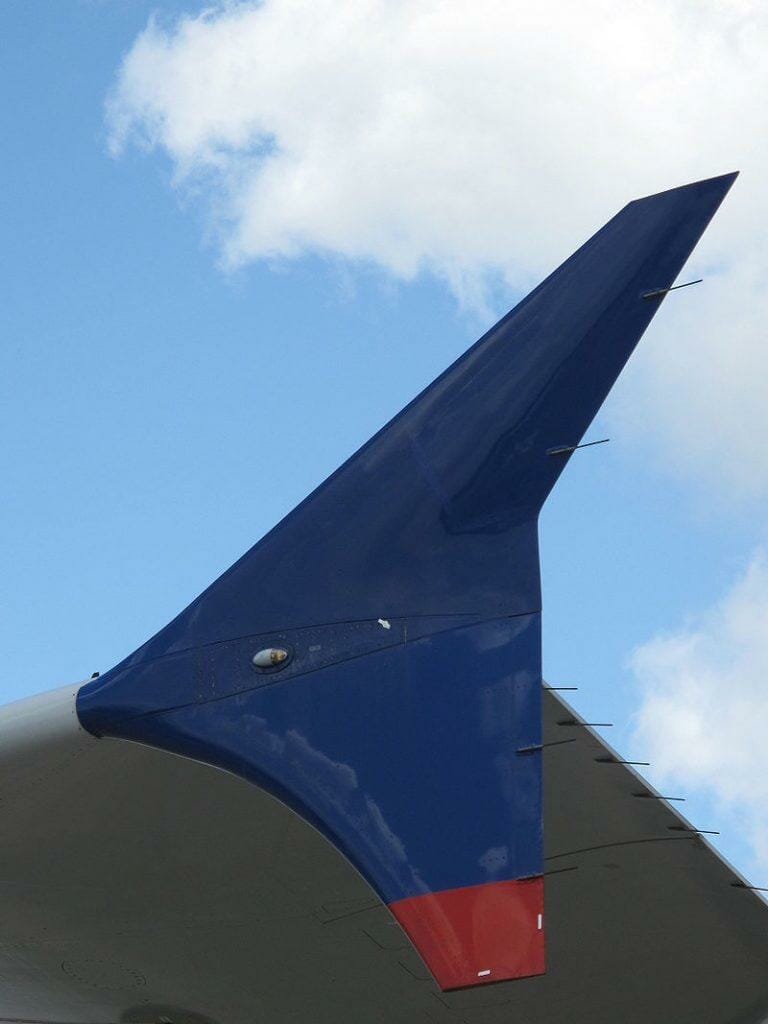Have you ever wondered why the wingtips of some airplanes are curved up? These special devices, called winglets, are actually quite important and now there are several different types of them. Here’s what they are designed to do, when they were invented and how different types of winglets look like.
Before we get into winglets, you have to know something about aerodynamics and what plane wings do. Lift is generated by the difference of pressure created under and above the wing. Higher pressure accumulates on the bottom of the wing and makes air move outwards, where at the end of the wing it meets a lower pressure zone. That is how vortexes are created – these tiny tornadoes at the wingtips of the plane, which you can sometimes see in movies and videos.
They may not look like much, but they are really bad for a couple of reasons. Firstly, they represent loss in efficiency – it is basically drag that you can see. Secondly, wingtip vortexes can be strong enough to cause problems for the airplanes that are following. So how do you combat them? With winglets, of course.
They allow smoothing out the airflow at the wingtips, reducing drag and improving efficiency. It means that the plane can fly faster and a glider can glide further. Furthermore, winglets allow generating more lift without increasing wingspan. So it is a big win all around, which is why you see winglets on pretty much all airliners nowadays.

The first patent for a simple winglet design was filled in 1897 – even then people already knew that these vortexes are no good. A functional design appeared in 1910, but these devices really took off in the Second World War, when they were tested in the Messerschmitt Me 163 jet fighter. However, they were not curved upwards – these winglets, later named Hoerner wingtips, were going straight down. Sighard F. Hoerner was the scientist who in 1952 proved the effectiveness of downwards winglets.
Another research, published in 1972 by Richard Whitcomb, a NASA scientist, proved that wings with winglets are as much as 20 % more efficient. That is basically why most airliners have them now. However, not all winglets are the same.

The one that curves up smoothly is called a “blended winglet” – that is probably the most common one or at least the one that attracts the most attention. Then there is the wingtip fence – a vertical panel finishing the wing – those are usually smaller and not as pleasing to the eye. The Boeing 787 Dreamliner has a special kind of wingtips – they curve back instead of up or down – it is called “raked wingtip”. In this case, the wingspan is a bit larger, but vortexes are avoided equally well. Finally, the 737 MAX uses somewhat of a hybrid design – winglets curve nicely upwards and downwards.

Interestingly, wingtip devices are used in rotors and propellers too. However, they are quite a bit smaller and not as easy to see. Usually, propellers have raked wingtips, but sometimes winglets can be seen too. Some fans have been manufactured with winglets, but experts doubt that they have any benefits.
Now you know. Next time you’re flying somewhere you will be able to tell a random stranger that the winglets reduce drag by minimizing the formation of wingtip vortexes. They certainly will be thrilled to know that this makes planes faster and more efficient – that is such a not-annoying way of making friends.




